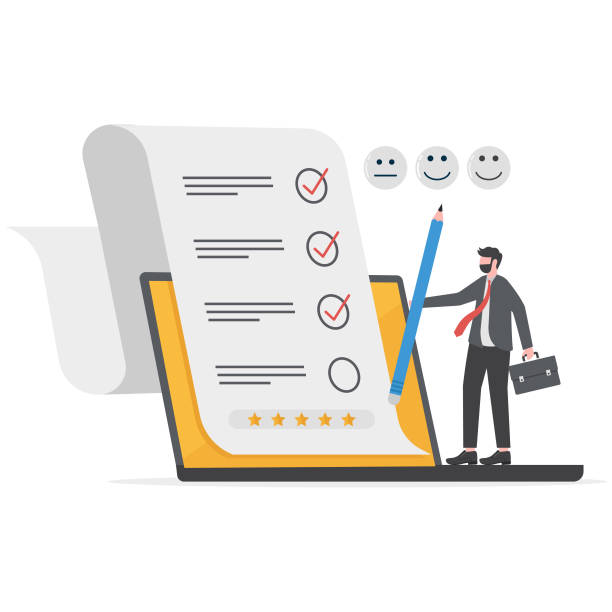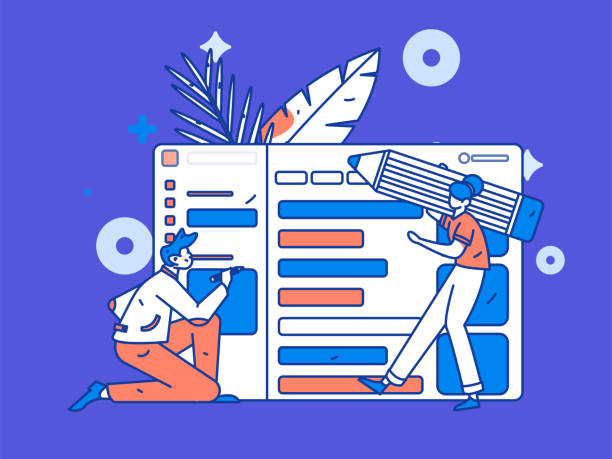Planning and Foundation for E-commerce Website Design
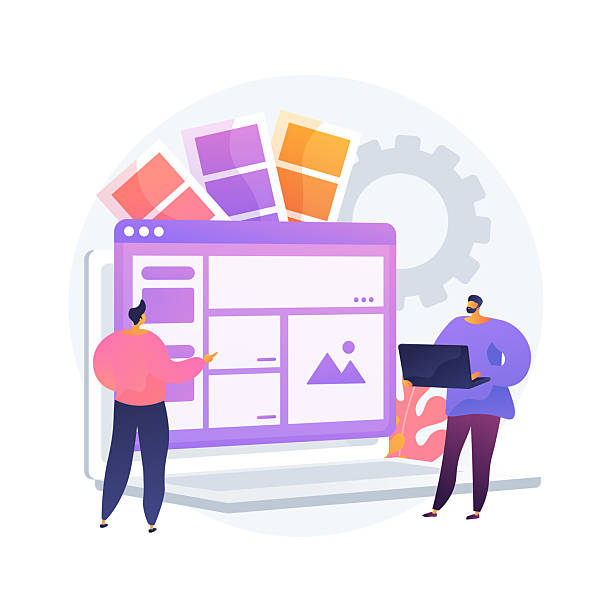
Before any action for e-commerce website design, it is essential to conduct a #comprehensive_and_detailed_planning.
This stage, often overlooked, plays a vital role in the success or failure of your online business.
First, extensive #market_research must be conducted to identify needs, competitors, and opportunities in the industry.
Identifying the target audience is of high importance; determining which age group, gender, or interests your products or services are suitable for, dictates the design path.
Also, precisely defining the products or services to be offered, the business model (B2B, B2C, D2C), and pricing strategies are considered essential steps.
Choosing a suitable e-commerce platform is a crucial part of this planning, which should be done considering scalability, budget, and required features.
Do you need a ready-made platform (like Shopify) or a custom-coded system? Each has its own advantages and disadvantages that must be carefully considered.
This explanatory and guiding stage provides initial training on how to approach the project’s zero phase and lays the foundation for a powerful e-commerce website.
How much does losing business leads due to an unprofessional website cost you? Solve this problem forever with professional corporate website design by Rasavab!
✅ Increased credibility and trust of potential customers
✅ Easier attraction of new business leads
⚡ Get a free consultation right now!
Choosing the Right Platform for Your E-commerce Website Design

Choosing the right platform for e-commerce website design is one of the key decisions that directly impacts the efficiency, scalability, and long-term costs of your online business.
There are numerous options available in the market, each with its own advantages and limitations.
Ready-made platforms like Shopify are considered ideal for small and medium-sized businesses looking for quick setup without requiring deep technical knowledge.
They offer comprehensive solutions including hosting, security, and payment gateways, but have less flexibility in customization and involve monthly fees or a percentage of sales.
On the other hand, open-source platforms like WooCommerce, which runs on WordPress, or Magento offer very high flexibility in customization and development.
These platforms are more suitable for larger businesses or those requiring specific features and complex integrations, but they demand more technical knowledge for setup and maintenance, and their hosting and development costs can be higher.
This analytical section helps you make the best decision for your online store website by understanding the characteristics of each platform, ensuring a sound investment.
The Importance of User Experience (UX) and User Interface (UI) in E-commerce Website Design
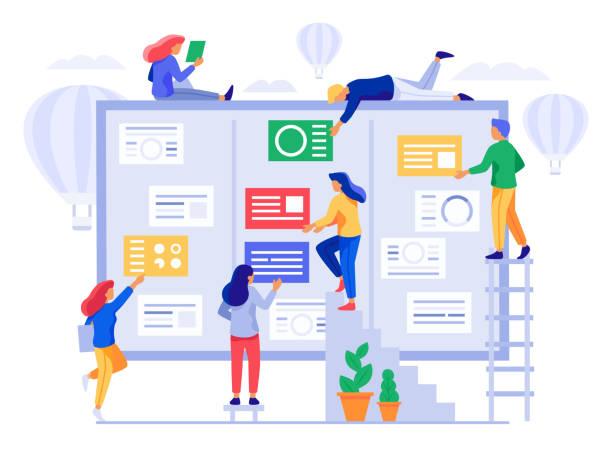
In the competitive world of e-commerce, merely having excellent products is not enough; how your store is presented and how customers interact with it is crucial.
This is where the role of User Experience (UX) and User Interface (UI) becomes prominent in e-commerce website design.
UX refers to all the feelings and experiences a user has while using your site, whereas UI refers to the visual appearance and graphic elements of the website.
Good UX ensures customers can easily find what they want, have an enjoyable navigation experience, and complete the purchase process without any obstacles.
This includes responsive design for mobile, high loading speed, and a logical page structure.
On the other hand, an attractive and professional UI, using quality colors, fonts, and images, builds customer trust and conveys a good sense of your brand to them.
Product page layout, clear Call-to-Action (CTA) buttons, and a simple, transparent payment process are among the key UI/UX elements that must be considered in design.
Ignoring these specialized and educational aspects can lead to high shopping cart abandonment rates and reduced sales.
Therefore, investing in quality UI/UX design is an investment in the long-term success of your online store.
| UI/UX Element | Description | Importance in Online Store |
|---|---|---|
| Responsive Design | Ability to adapt the site to various screen sizes (mobile, tablet, desktop) | Easy access for mobile users and increased conversion rates |
| Easy and Intuitive Navigation | Menu and categorization structure such that the user can easily find their way | Reduced bounce rate, improved user experience, and increased user session duration |
| Website Loading Speed | Time it takes for all page content to load | Preventing impatient users from leaving and improving SEO |
| Attractive and Complete Product Pages | Includes high-quality images, detailed descriptions, reviews, and related information | Increased customer trust and encouragement to purchase |
| Simple Payment Process | Minimum steps required to complete a purchase, diverse payment options, and cost transparency | Reduced shopping cart abandonment rate and increased final sales |
Search Engine Optimization (SEO) for E-commerce Websites

SEO, or Search Engine Optimization, is the cornerstone of attracting organic traffic to your e-commerce website.
Without SEO, even the best e-commerce website design might go unnoticed amidst a multitude of competitors.
The main goal of SEO is to improve your website’s ranking in Google and other search engine results so that users can easily find you when searching for relevant products.
This specialized process involves several important aspects.
The first step is keyword research, which should be based on phrases your potential customers use to find your products.
Then, these keywords should be naturally incorporated into titles, product descriptions, meta tags, and the content of site pages (On-Page SEO).
In addition to content, technical SEO is also vital; it includes optimizing site speed, creating an XML sitemap, using structured data (Schema Markup) to display rich information in search results, and ensuring site crawlability by search engine robots.
Link building (Backlink Building), also known as Off-Page SEO, increases your site’s authority and serves as a sign of your site’s quality and importance to search engines.
This section provides a comprehensive guide for attracting more customers and increasing your website’s visibility.
Is your e-commerce website ready to attract maximum customers and increase sales?
Rasavab, with professional e-commerce website design, is your definitive solution!
✅ Increased speed and improved SEO
✅ Excellent user experience on mobile and desktop⚡ Get a free e-commerce website design consultation from Rasavab!
Security and Online Payment in E-commerce Website Design
![]()
Security in e-commerce website design is of utmost importance, as it directly deals with customer trust and the protection of their sensitive information.
A security flaw can lead to loss of customer data, damage to brand reputation, and even legal penalties.
Using an SSL/TLS certificate (which changes the site address from HTTP to HTTPS) is the first essential step.
This certificate encrypts the information exchanged between the user and the server, preventing data interception by third parties.
Choosing a secure and reliable online payment gateway is also crucial.
These gateways must comply with international security standards such as PCI DSS to protect customer credit card information during transactions.
Furthermore, measures must be taken to combat online fraud and cyberattacks.
This includes regular updates of the platform and plugins, using strong firewalls, and monitoring suspicious activities.
Providing a complete explanation of security measures and news updates in this area can give customers more peace of mind.
Paying attention to security is not only a technical necessity but also a fundamental element in creating a sustainable and successful e-commerce business.
Content and Marketing for Customer Attraction to Online Store
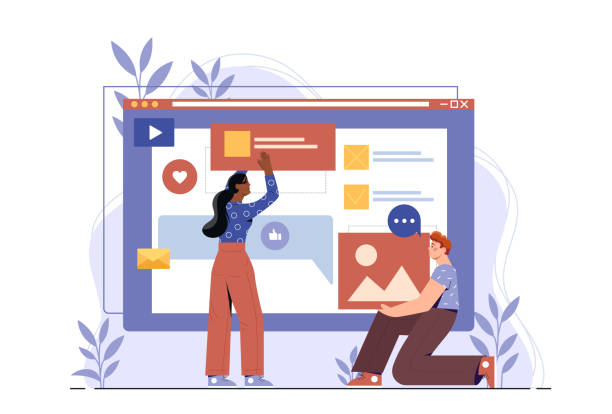
Having an online store with flawless design and excellent products, without a strong marketing strategy, is like owning a jewelry store in the desert.
To attract customers and encourage them to buy, you need to produce valuable content and execute targeted marketing campaigns.
Content marketing is one of the most powerful tools; creating educational blog posts, buying guides, engaging videos, and infographics that answer customer questions or provide entertaining information can increase organic traffic and establish your brand as an industry authority.
Using social media to interact with audiences, inform about new products and discounts, and run advertising campaigns is also very effective.
Email marketing, by collecting customer email addresses and sending regular newsletters, special offers, and abandoned cart reminders, can significantly increase conversion rates.
Storytelling or brand storytelling is also an engaging way to build emotional connections with customers and differentiate from competitors.
These marketing methods serve as a guide to ensure your e-commerce website design gains visibility and achieves desired results.
Inventory and Logistics Management in a Successful E-commerce Website Design

Inventory and logistics management are the operational backbone of any online store.
Even the best e-commerce website design cannot succeed if it faces issues with supply, warehousing, and shipping.
Proper inventory management means maintaining a balance between supply and demand; excessive inventory means tied-up capital and high storage costs, while inventory shortages lead to lost sales and customer dissatisfaction.
Using Inventory Management Systems (IMS) or ERP software that integrate with your e-commerce platform can automate and optimize this process.
The logistics section includes all stages from order placement until the product reaches the customer.
This includes selecting a suitable shipping partner, secure packaging, order tracking, and managing product returns (returns).
Offering various shipping options, including express delivery, standard delivery, and local pickup, can enhance the customer experience.
Also, transparency regarding shipping costs and delivery times builds customer trust.
Efficient management of these specialized, educational, and analytical processes not only reduces costs but also significantly contributes to customer satisfaction and repeat purchases.
| Logistics Aspect | Description | Importance in Customer Experience |
|---|---|---|
| Inventory Management | Monitoring and controlling inventory levels to prevent shortages or surpluses | Preventing out-of-stock sales, reducing warehousing costs |
| Choosing Shipping Methods | Offering diverse shipping options (post, courier, Tipax, etc.) with varying costs and timings | Increased customer satisfaction by providing choice and flexibility |
| Order Tracking | Ability for customers to track order status in real-time | Increased trust and reduced customer support calls |
| Return Policy | Clear rules and process for product returns by customers | Building customer confidence and reducing online purchase risk |
| Packaging | How products are packaged to prevent damage during transit and provide an attractive unboxing experience | Increased product safety, creating a positive brand impression |
Data Analysis and Continuous Improvement of E-commerce Website
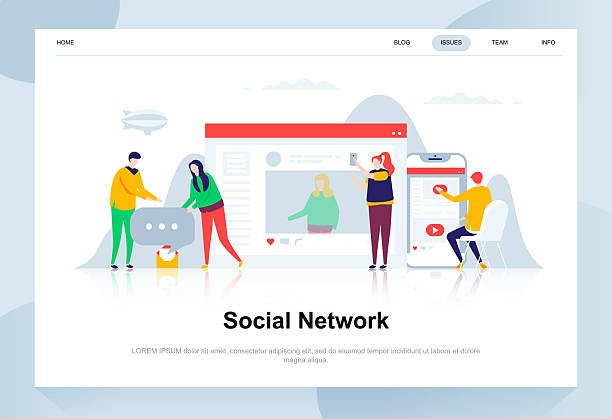
After launch and even during operation, the success of your e-commerce website heavily depends on your ability to analyze data and continuously improve.
Tools like Google Analytics play a vital role in this process.
These tools provide valuable insights into user behavior: where they came from, which pages they viewed, how long they stayed on the site, and at what stage of the purchase process they left the site.
Analyzing this data allows you to identify the strengths and weaknesses of your e-commerce website.
Conversion Rate Optimization (CRO) is one of the most important goals of data analysis.
Using techniques like A/B testing, you can make small changes to page design, buttons, or purchasing processes and measure their impact on the conversion rate (e.g., visitor-to-buyer ratio).
Customer reviews and feedback are also valuable sources for improvement.
By collecting and analyzing this information, you can improve the user experience, remove purchasing barriers, and ultimately increase your sales.
This is an endless analytical and educational cycle that helps you always stay one step ahead of competitors.
Are you frustrated with your online store’s low conversion rate?
Rasavab, with professional e-commerce website design, is your definitive solution!
✅ Increase your sales and revenue
✅ Unparalleled user experience for your customers
⚡ Get a free consultation right now!
Legal and Ethical Considerations in Launching and Managing an Online Store
![]()
E-commerce website design and its management are not limited to technical and marketing aspects; special attention must also be paid to legal and ethical considerations.
Compliance with laws related to customer privacy, especially concerning the collection, storage, and use of their personal information, is crucial.
This includes having a clear and accessible Privacy Policy that informs customers how their data is managed.
Furthermore, comprehensive and transparent Terms and Conditions for site usage and product purchases must be prepared, defining the rights and responsibilities of both parties (seller and buyer).
Issues related to intellectual property, such as copyright of product images and textual content, are also of high importance.
Unauthorized use of others’ content can lead to legal problems.
The discussion of consumer protection laws, including the right to return goods and warranty, must also be carefully observed.
From an ethical perspective, transparency in pricing, avoiding misleading information, and responsiveness to customer complaints strengthen your brand’s credibility.
This explanatory section raises thought-provoking content, as neglecting it can have serious consequences for your online store.
The Future of E-commerce Website Design and New Trends

The world of e-commerce is constantly evolving and progressing, and e-commerce website design is no exception.
To survive and grow in this dynamic market, awareness of new trends and readiness to adopt them are essential.
One of the most important future trends is the widespread use of Artificial Intelligence (AI) and machine learning for personalizing the shopping experience.
Smart recommendation systems, AI-powered chatbots for customer support, and advanced data analysis are just some of AI’s capabilities.
Augmented Reality (AR) and Virtual Reality (VR) are also changing how customers interact with products; customers can virtually try on clothes or see how a piece of furniture looks in their home space.
Voice Commerce and sales through social platforms (Social Commerce) are also growing trends that provide new channels for purchasing.
The move towards Headless Commerce, where the frontend (user-facing) and backend (business logic) are separate, brings greater flexibility and scalability for large stores.
This news and analytical section provides thought-provoking content about the future of this industry and helps you prepare for the challenges ahead in e-commerce website design.
Frequently Asked Questions
| Question | Answer |
|---|---|
| What is e-commerce website design? | It is the process of creating an online platform for selling products or services, which includes User Interface (UI) design, User Experience (UX), and necessary functionalities for online purchasing. |
| What are the key features of a good e-commerce website? | Easy navigation, high loading speed, strong search capability, efficient shopping cart, secure payment gateway, clear display of products with high-quality images, ability to show user reviews, and responsiveness (mobile compatibility). |
| What are common platforms for e-commerce website design? | Popular platforms such as WooCommerce (on WordPress), Shopify, Magento, PrestaShop, and also custom Content Management Systems. |
| What is the importance of an e-commerce website being responsive? | Given the increased use of mobile for online shopping, site responsiveness (correct display on different screen sizes) is crucial for providing a good user experience and increasing conversion rates. |
| How long does the e-commerce website design process usually take? | The duration depends on the project’s complexity, number of products, required special features, and implementation method, and can vary from a few weeks to several months. |
And other services of Rasa Web advertising agency in the field of advertising
Smart Marketplace: Designed for businesses seeking to increase click-through rates through precise audience targeting.
Smart UI/UX: Designed for businesses seeking to increase website traffic through precise audience targeting.
Smart UI/UX: Designed for businesses seeking to increase click-through rates through marketing automation.
Smart Google Ads: An effective tool for increasing website traffic with the help of marketing automation.
Smart UI/UX: A fast and efficient solution for online growth focusing on SEO-driven content strategy.
And hundreds of other services in the field of internet advertising, advertising consultation, and organizational solutions
Internet Advertising | Advertising Strategy | Advertorial
Sources
E-commerce Store Design GuideIncreasing Online Store ProfitabilityBuilding a Successful E-commerce WebsiteComprehensive Web Design Guide
? Are you looking for a big leap in the online world? Rasavab Afarin creates a powerful and effective presence for your business by providing innovative digital marketing solutions, including fast website design.
📍 Tehran, Mirdamad Street, Next to Central Bank, Southern Kazeroun Alley, Ramin Alley, No. 6

